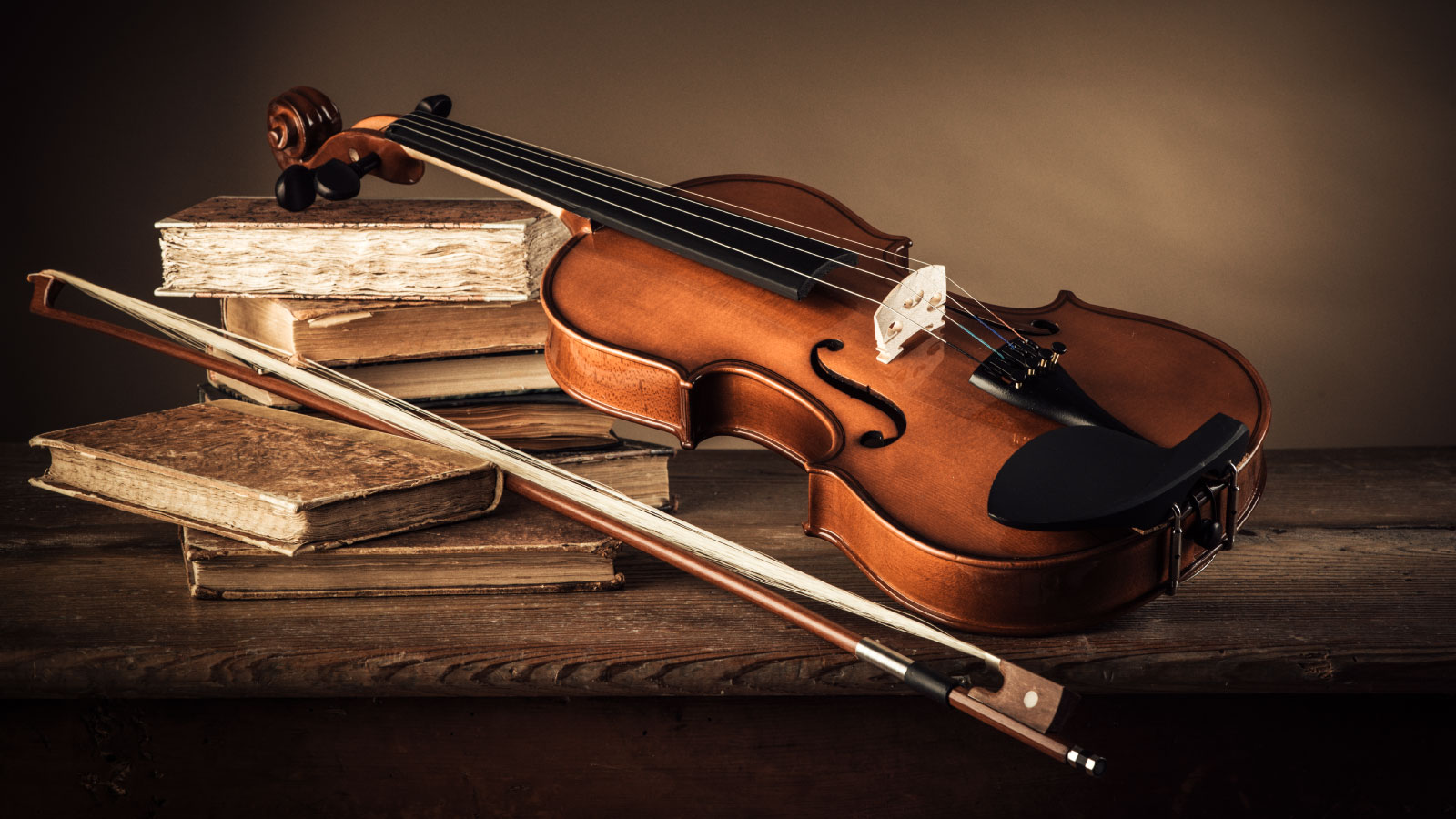Home>Genres>Classical>How To Find Classical Music By Humming


Classical
How To Find Classical Music By Humming
Modified: February 24, 2024
Learn how to find classical music by humming. Discover a simple and effective technique to identify classical songs just by humming the melodies.
(Many of the links in this article redirect to a specific reviewed product. Your purchase of these products through affiliate links helps to generate commission for AudioLover.com, at no extra cost. Learn more)
Table of Contents
Introduction
Classical music has captivated audiences for centuries with its emotional depth and rich melodies. Whether you are a music lover, a student studying music history, or simply someone looking to explore the beauty of classical compositions, finding specific classical pieces can sometimes be a challenge. Fortunately, with advancements in technology and the power of the internet, there are now innovative methods that can help you discover classical music by humming.
In this article, we will explore the growing trend of using humming to identify classical music and provide step-by-step guidance on how to best utilize this technique. Whether you have a tune stuck in your head and want to know its origin or are looking to learn more about a classical piece you heard in passing, this guide will show you how to uncover the mysteries of classical music.
Understanding the fundamentals of classical music is essential when using humming as a search method. Classical music is a genre known for its complexity, composed by renowned artists such as Mozart, Beethoven, and Bach. This genre is characterized by its adherence to musical structures, harmony, and orchestration. Familiarizing yourself with the different periods of classical music, such as the Baroque, Classical, Romantic, and Modern eras, will provide a foundation for your classical music journey.
Now let’s dive into the significance of humming and how it can help you find your favorite classical tunes.
Understanding Classical Music
Classical music is a genre that encompasses a wide range of compositions and styles created by composers from various time periods. It is distinguished by its intricate melodies, harmonies, and structures, as well as the use of instruments such as the piano, violin, and orchestra. Taking the time to understand the nuances of classical music will enhance your ability to identify and appreciate different compositions.
The Baroque period, which spanned from 1600 to 1750, featured ornate and elaborate compositions. Composers like Johann Sebastian Bach and Antonio Vivaldi were prominent during this era, and their music is known for its intricate counterpoint and use of instruments such as the harpsichord.
The Classical period, which took place from roughly 1750 to 1830, introduced a more structured and balanced approach to composition. Composers like Wolfgang Amadeus Mozart and Ludwig van Beethoven were key figures during this time, and their music is characterized by clear melodies, symmetrical phrases, and precise craftsmanship.
The Romantic period, spanning from the early 19th century to the early 20th century, embraced emotion, drama, and personal expression. Composers such as Frédéric Chopin and Pyotr Ilyich Tchaikovsky pushed the boundaries of traditional composition, incorporating intense emotions and innovative harmonies into their music.
The Modern period encompasses compositions from the late 19th century to the present day. This era saw composers like Igor Stravinsky and Arnold Schoenberg challenging the traditional norms of classical music, experimenting with dissonance, unconventional scales, and alternative forms.
By familiarizing yourself with the characteristics and key figures of each period, you will have a better understanding of the various styles and structures that make up classical music. This knowledge will serve as a valuable resource when identifying specific classical pieces through humming.
Now, let’s explore the significance of humming in the search for classical music.
The Significance of Humming
Humming is a powerful tool when it comes to identifying classical music. It allows you to convey the melody of a piece without needing to know the title, composer, or specific details. By humming the tune, you are tapping into your own musical memory and connecting with the essence of the composition.
One of the greatest benefits of humming is that it transcends language barriers. Classical music represents a global, universal language that can be appreciated and understood by people from different cultures and backgrounds. By hummings a tune, you can communicate the essence of a classical piece to others, even if you don’t share a common spoken language.
Furthermore, humming can evoke strong emotional responses. The act of humming engages not only our vocal cords but also our sense of rhythm and melody. When we hum a classical piece, we are not only reproducing the melody but also embodying the emotions and feelings that the music conveys. This emotional connection can lead to a deeper appreciation and understanding of the music.
In addition to its emotional impact, humming also possesses a practical aspect. Often, we might find ourselves humming snippets of classical melodies that we have heard in movies, commercials, or even in public spaces. By harnessing this innate ability to retain melodies, we can use humming as a starting point in our quest to identify specific classical compositions.
Humming also allows for a more natural and intuitive search process. Rather than relying solely on written descriptions or technical terms, we can rely on our own intuition and musical instincts to convey the essence of a piece. This organic approach can make the search for classical music more personal and engaging.
Overall, the significance of humming lies in its ability to bridge the gap between the human experience and the world of classical music. By utilizing this tool, we can tap into our musical memory, evoke emotions, and explore the vast ocean of classical compositions.
Now let’s move on to the practical steps of using humming to find classical music.
Step 1: Preparing to Hum
Before diving into the process of humming to find classical music, it’s important to prepare yourself and create an optimal environment for your search. Here are a few key steps for preparing to hum:
- Clear your mind: Find a quiet and comfortable space where you can focus and eliminate distractions. Take a deep breath and clear your mind of any other thoughts or distractions. This will help you concentrate on the melody you are trying to recreate through humming.
- Listen to the melody: If you have a specific classical melody in mind that you want to find, take some time to actively listen to it. Pay attention to the nuances, rhythms, and contours of the melody. Familiarize yourself with the overall structure and any distinctive features that stand out. This will help you reproduce the melody more accurately when you start humming.
- Warm up your voice: Humming requires using your vocal cords and producing melodic tones. To ensure the best possible results, warm up your voice by doing some simple vocal exercises or humming scales. This will help you loosen up and get your voice ready for humming the desired classical melody.
- Choose the right pitch: Selecting the correct starting pitch is crucial for accurately representing the melody through humming. Take your time to find the pitch that best matches the starting note of the melody. You can use a musical instrument, such as a piano or guitar, to help you find the right pitch if needed.
- Practice your humming: Spend a few minutes practicing humming different tunes or melodies to get comfortable with the process. This will help you refine your humming skills and improve your ability to express the melody accurately.
By following these preparation steps, you will set yourself up for a successful humming session and increase your chances of identifying the classical music piece you are searching for. Remember, the goal is to create a focused and receptive environment that allows you to fully engage with the melody and convey it through your humming.
Now that you’re prepared to hum, let’s move on to the next step: humming and recording.
Step 2: Humming and Recording
Once you have prepared yourself to hum, it’s time to start recreating the melody and recording your humming. Follow these steps to effectively hum and capture your rendition:
- Start humming: Begin by humming the melody, focusing on reproducing the rhythm and notes to the best of your ability. Try to maintain a steady tempo and keep the melody as accurate as possible. Remember that the goal is to capture the essence of the classical piece through your humming.
- Record your humming: Use a device such as your smartphone or a voice recorder to record your humming. Ensure that the recording device is nearby and easily accessible for a seamless recording process. Start the recording before you begin humming and maintain a consistent volume level throughout.
- Hum the entire melody: It’s essential to hum the entire melody of the classical piece, especially if there are specific sections or motifs that are distinctive. Pay attention to any melodic variations, ornaments, or unique phrasing, and try to incorporate them into your humming.
- Repeat if necessary: If you feel that your initial humming did not accurately convey the melody, don’t hesitate to repeat the process. Take your time and make adjustments as needed. It’s important to capture the melody as faithfully as possible.
- Save and organize your recordings: Once you have recorded your humming, save the files and organize them in a way that is easy to access and reference. Consider adding brief notes about the classical piece, such as any contextual information or specific musical features you noticed while humming.
Recording your humming is a crucial step in the process of finding classical music. It allows you to preserve your rendition and refer back to it during the next steps of analysis and identification. By following these steps and capturing your humming accurately, you increase the chances of successfully discovering the classical piece you are searching for.
Now that you have recorded your humming, let’s move on to the next step: analyzing the hum to uncover the identity of the classical music piece.
Step 3: Analyzing the Hum
After recording your humming, it’s time to analyze it carefully to uncover the identity of the classical music piece. The analysis process involves attentive listening, comparison, and observation of the unique characteristics present in your hum. Follow these steps to effectively analyze your hum:
- Listen attentively: Begin by listening to your recorded hum with a focused ear. Pay close attention to the rhythm, melody, and any unique features that stand out. Try to identify specific phrases, motifs, or melodic intervals that may help you recognize the piece.
- Compare to known compositions: If you have a general idea or even a vague recollection of the composer or era associated with the classical piece, listen to compositions from that time period and by those composers. Compare your hum to the melodies of well-known compositions, keeping an ear out for similarities or shared melodic fragments.
- Research context and musical elements: Take time to research the context and musical elements associated with the composers and time periods you suspect the piece may belong to. Pay attention to the structural characteristics, harmonic progressions, and instrumental arrangements that are typical of that era or composer. This knowledge will help you narrow down your search and make more informed comparisons.
- Seek professional help if needed: If you are unable to identify the classical music piece through your own analysis, consider reaching out to a music historian, a classical music enthusiast, or a professional musician who specializes in classical music. They may have a deeper knowledge or resources that could help identify the composition based on your recorded humming.
- Use online tools and forums: There are various online platforms and forums dedicated to classical music where you can seek help from fellow enthusiasts or experts. Upload your recorded humming and provide any relevant details or observations about the piece. The community may be able to provide insights, suggestions, or even direct identification of the composition.
Remember, analyzing the hum requires careful attention and patience. While it may take time to identify the specific classical music piece, embracing the process of discovery and exploration can be an enjoyable and enriching experience.
Now that you have analyzed your hum, let’s move on to the next step: utilizing online platforms and apps to aid in your search for classical music.
Step 4: Using Online Platforms and Apps
Utilizing online platforms and apps can greatly enhance your search for classical music based on your recorded humming. These resources provide access to vast databases, advanced algorithms, and music recognition technologies. Follow these steps to effectively use online platforms and apps in your search:
- Choose a reputable platform or app: Research and select a trustworthy and reliable online platform or app that specializes in music identification. Popular options include SoundHound, Shazam, and Musipedia. Make sure that the platform or app you choose supports classical music recognition.
- Upload or play your recorded hum: Depending on the platform or app, you can either upload your recorded humming or use the app to directly capture the melody by humming or playing it on a musical instrument. Follow the instructions provided by the platform or app to make the most accurate recording.
- Allow the platform or app to analyze the melody: Once you have uploaded or played your hum, the platform or app will apply its music recognition algorithms and compare the melody to its extensive database. This process may take a few seconds to a minute, depending on the complexity of the classical piece.
- Review the results: After the analysis is complete, the platform or app will provide you with a list of potential matches or suggestions based on your recorded humming. Review the results carefully and listen to the sample recordings or information provided for each potential match.
- Further refine the search if necessary: If you are unable to find an exact match or if the results are not conclusive, try adjusting the search parameters or input additional details about the melody, such as specific motifs or notable variations. This can help narrow down the results and provide more accurate suggestions.
- Explore additional features: Many online platforms and apps offer additional features and resources, such as access to sheet music, artist biographies, and recordings of the identified classical piece. Take advantage of these resources to deepen your understanding and appreciation of the composition.
Using online platforms and apps can significantly streamline the process of identifying classical music based on your recorded humming. These tools leverage advanced technology and extensive databases to provide accurate and efficient results.
Now that you have explored online platforms and apps, let’s move on to the final step: seeking professional assistance if needed.
Step 5: Seeking Professional Assistance
If your efforts to find and identify the classical music piece through humming and using online platforms have been unsuccessful, it may be time to seek professional assistance. Seeking help from music professionals, historians, or knowledgeable individuals in the field can provide valuable insights and expertise. Here are some steps to consider when seeking professional assistance:
- Consult a music historian or expert: Reach out to a local music conservatory, university music department, or music library to inquire about professionals who specialize in classical music. They can offer their expertise and knowledge to help identify the composition based on your recorded humming or guide you in the right direction.
- Attend classical music events or concerts: Engage with the classical music community by attending concerts, recitals, or lectures where you can connect with musicians, composers, and enthusiasts. They may be able to provide valuable insights or suggest resources that could assist in your search.
- Participate in classical music forums or communities: Join online forums or communities dedicated to classical music where you can interact with fellow enthusiasts and professionals. Share your recorded humming, provide any additional details, and seek their expertise in identifying the composition you are searching for.
- Consider hiring a musicologist or music consultant: If you are deeply passionate about finding the classical music piece or if it holds special significance, you may choose to hire a musicologist or music consultant. These professionals have extensive knowledge and resources at their disposal and can offer specialized assistance in identifying the composition.
- Explore music libraries and archives: Visit local or online music libraries and archives that house extensive collections of classical music scores and recordings. Librarians or archivists may be able to guide you to relevant resources or offer insights based on their expertise.
Remember, professional assistance can provide a fresh perspective and access to resources that may not be readily available to you. They can offer guidance, historical context, and in-depth knowledge that can bring you closer to identifying the classical music piece you are searching for.
Now that you have explored the steps of seeking professional assistance, it’s time to conclude our comprehensive guide on finding classical music by humming.
Conclusion
Discovering classical music by humming is an exciting and rewarding journey that connects us to the timeless beauty of this genre. By understanding the fundamentals of classical music, harnessing the power of humming, and leveraging online platforms and professional assistance, we can unravel the mysteries of classical compositions that resonate with us.
In this guide, we explored the significance of humming as a universal language that transcends barriers and evokes deep emotions. We discussed the importance of preparing to hum, from clearing our minds to warming up our voices. We then delved into the steps of successfully humming and recording melodies, followed by analyzing the hum and comparing it to known compositions.
Furthermore, we discussed the usefulness of online platforms and apps, which utilize advanced algorithms and vast databases to aid in identifying classical music based on our recorded humming. When our own efforts were not enough, we discussed the option of seeking professional assistance from music historians and experts, attending classical music events, and participating in online communities.
By following these steps and immersing ourselves in the vast world of classical music, we increase our chances of successfully finding and connecting with the pieces that speak to our souls. The journey of discovery is not only about identifying specific compositions but also about deepening our understanding and appreciation of classical music as a whole.
So, if you have a tune lingering in your mind or if you desire to explore the vast depths of classical music, take a moment to prepare, hum your melody, record it, and embark on the journey of discovery. Let the power of humming and the wonders of technology guide you to the beautiful compositions that have captivated generations for centuries.
Embrace the joy of classical music, let your voice become the bridge between the melodies of the past and your own musical journey. Happy humming and may you unearth the treasures of classical music!











